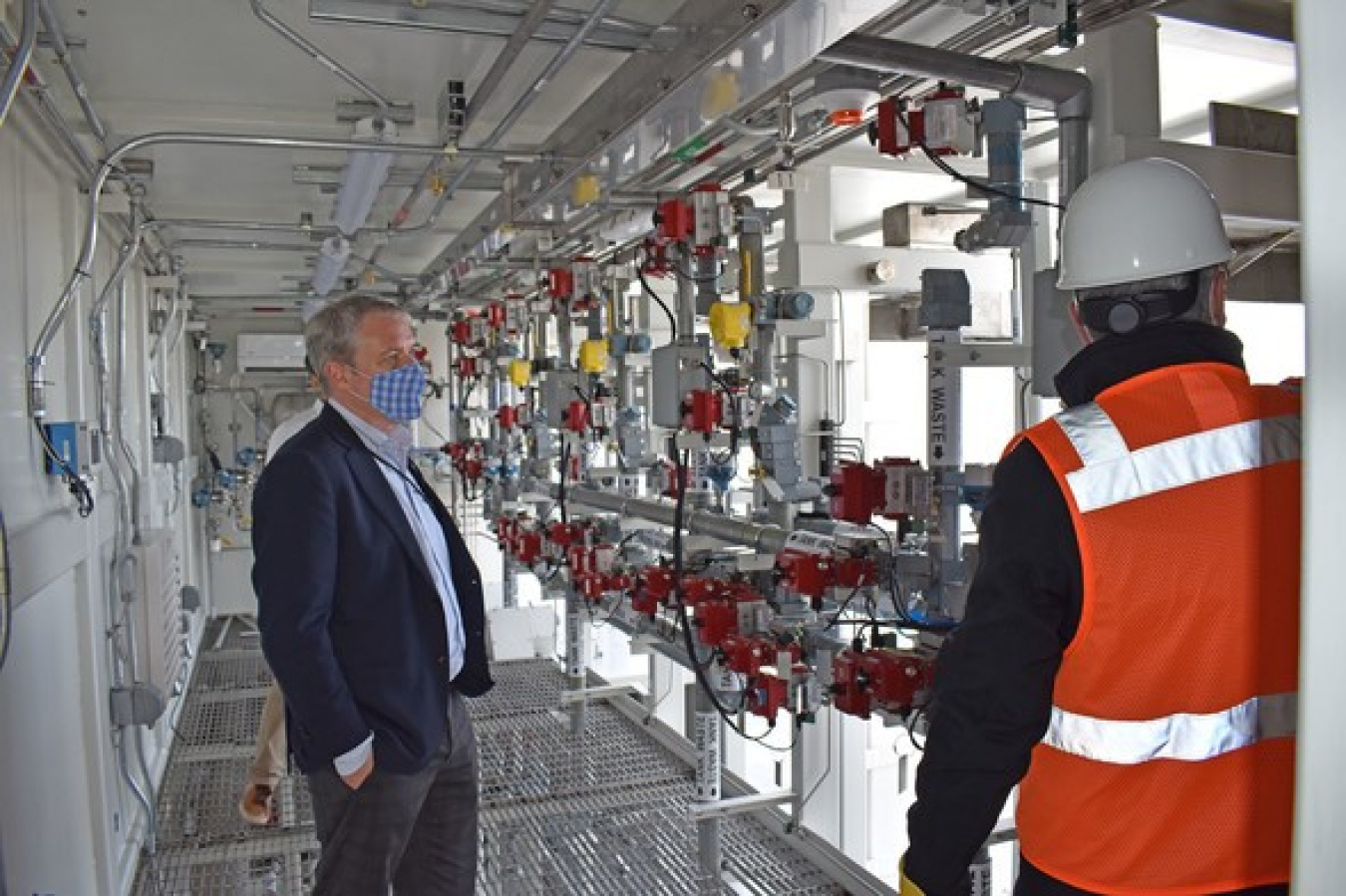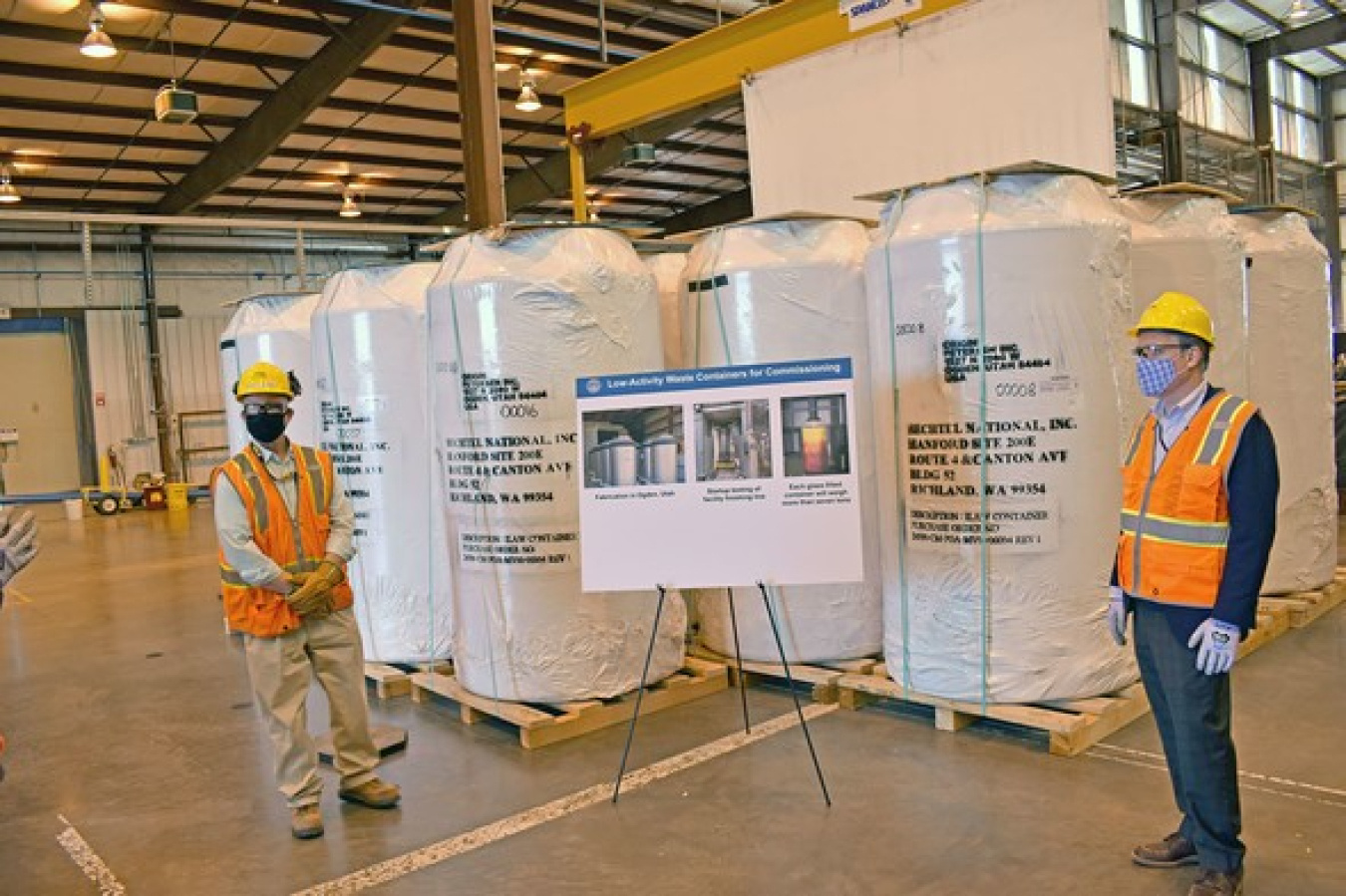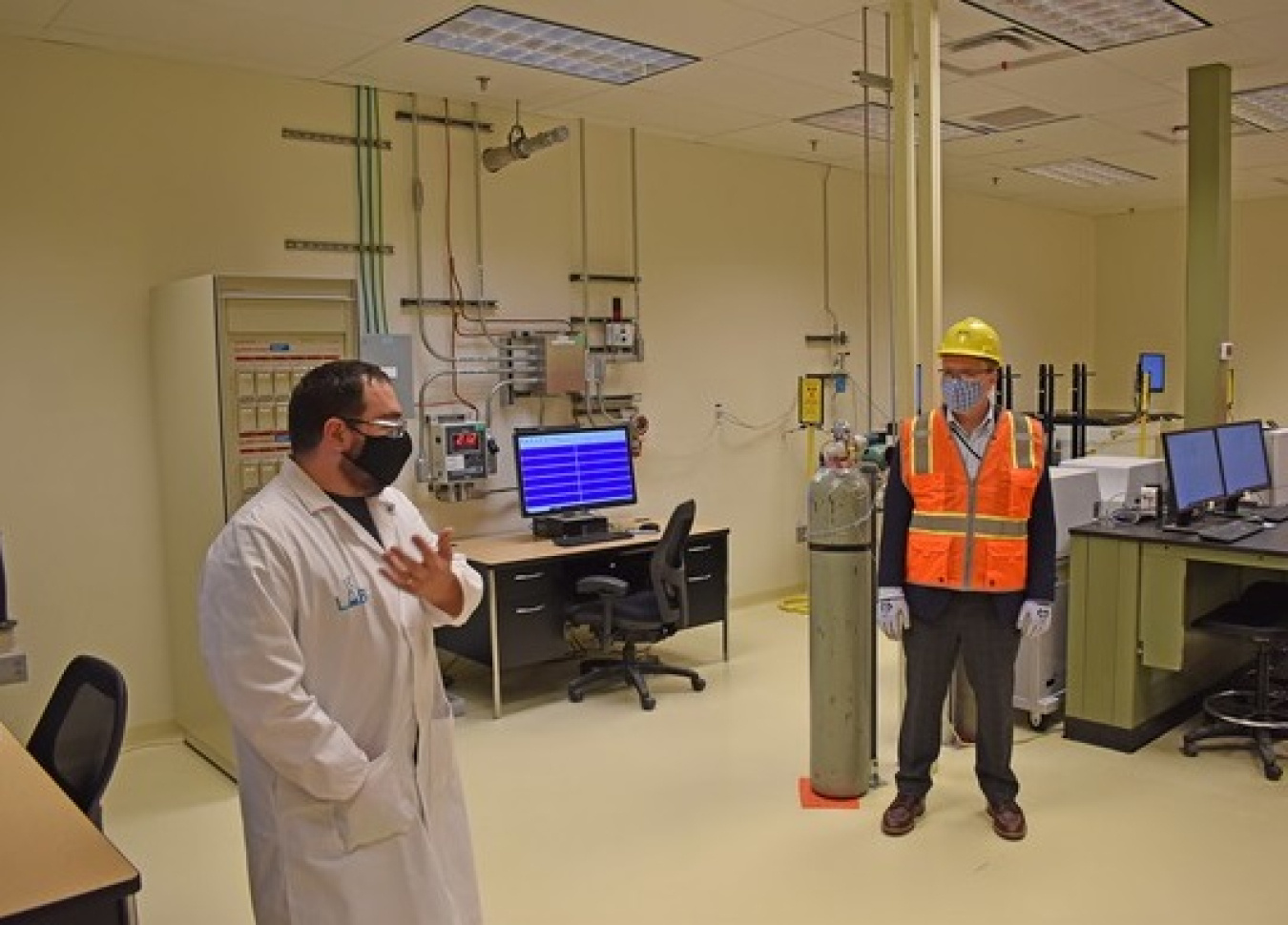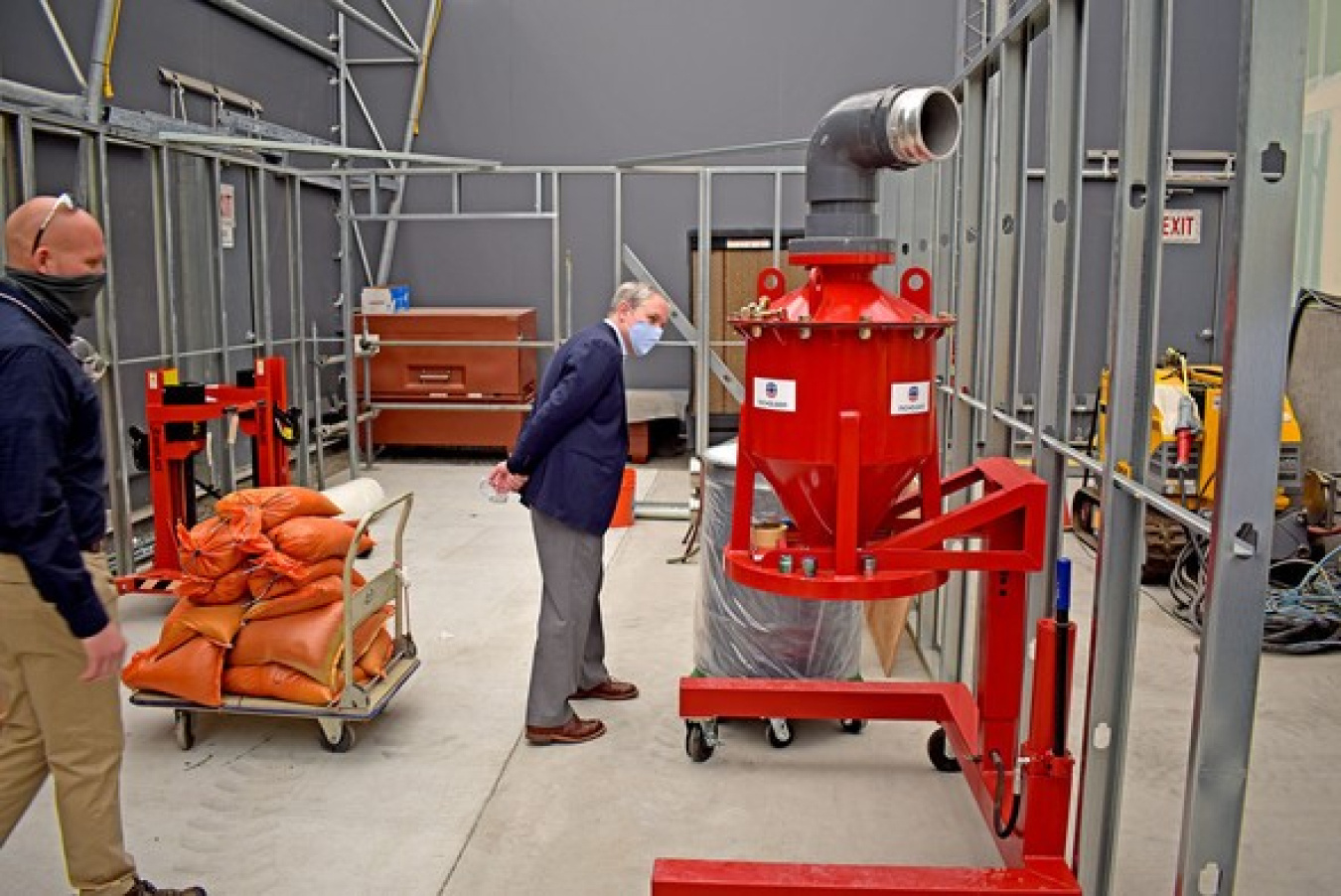EM Senior Advisor William “Ike” White visited the Hanford Site last week to view progress on the environmental cleanup mission.
Office of Environmental Management
November 3, 2020
RICHLAND, Wash. – EM Senior Advisor William “Ike” White visited the Hanford Site last week to view progress on the environmental cleanup mission.
“Despite unprecedented challenges caused by the ongoing COVID-19 pandemic, the Hanford team has demonstrated an ability to adjust, adapt, and move the cleanup mission forward,” said White. “They are progressing the Direct-Feed Low-Activity Waste (DFLAW) system that puts tank waste treatment on the horizon at Hanford, and addressing risks from the site’s plutonium production legacy.”
White got a firsthand look at advancements on several projects critical to the DFLAW system that will transform the Hanford Site by enabling a shift to tank waste treatment operations. The approach is a system of interdependent projects and infrastructure improvements that will operate together to send pretreated waste from Hanford’s tank farms directly to the Low-Activity Waste Facility at the Waste Treatment and Immobilization Plant (WTP).
White began his visit at the AP Tank Farm, where the recent delivery of a pretreatment system for tank waste marked the last piece of the physical DFLAW system to be put in place at Hanford. At WTP, White saw specially fabricated containers that were delivered to the site in October that will hold vitrified waste after it is treated so that it can be safely disposed.


White also visited the plant’s Analytical Laboratory, which recently became the first nuclear facility at the plant to finish startup testing, and he visited the plant’s Effluent Management Facility. White rounded out his first day at Hanford with a look at improvements to the disposal facility where tens of thousands of containers of vitrified low-activity waste will be placed.
In addition to viewing progress on Hanford’s tank waste mission, White visited a number of projects where workers are reducing significant risks and remediating contamination from Hanford’s national security mission.
At the Waste Encapsulation and Storage Facility, White got a look at the latest preparations for transferring capsules of highly radioactive cesium and strontium from underwater storage to dry storage casks.
At a visit to a mock-up used for practice and training, updates were provided on work to excavate highly radioactive soil from below Hanford’s 324 Building.

While at the 200 West Pump and Treat Facility, White congratulated workers on reaching the goal of treating approximately 2 billion gallons of groundwater this year.
White was also briefed on work getting underway to stabilize three aging underground waste disposal structures located in the footprint of the Plutonium Finishing Plant demolition area. See more on this project in this issue of the EM Update.
“With the risk reduction work and the transformative progress on the tank waste mission, 2020 represents an inflection point for Hanford,” said White. “The work being accomplished puts the site on a clear path to tank waste treatment and additional risk reduction in the years ahead.”

